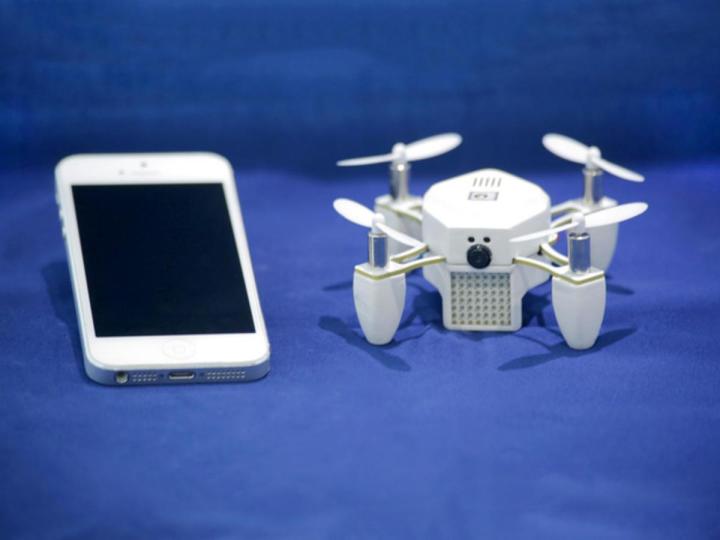
Harris’ work involved a grueling six weeks during which he spoke to just about anyone and everyone with knowledge about Zano and Torquing Group, the company behind it. He ultimately came to the conclusion that while the entire endeavor was massively mishandled, there wasn’t anything particularly malicious about what ultimately happened to the miniature drone. Instead, it was just an unfortunate combination of overblown confidence, underwhelming skill sets, and a remarkably effective PR machine that turned Zano into a pseudo-success.
By the time Zano ended its time on Kickstarter, it had managed to raise $3.5 million from over 12,000 backers, promising donors a palm-sized drone with a 15-minute battery life that would, as Harris notes, mimic gestures from a Wi-Fi-linked smartphone, automatically track and follow its operator, avoid obstacles, and even shoot “selfie” photos and videos . But as it turns out, it did none of that — really, not even close.
Despite initial claims that Zano’s “supply chain [was] 100% ready to go, from vital components that make Zano fly, to the very boxes that Zano [would be] packaged in,” things quickly began to go wrong. “Some key plastic parts were delayed, there were never-ending compliance and calibration tests to complete, and something was up with the propellers that arrived from China, according to campaign updates,” wrote Harris. “Once-eager backers started to get restive, demanding to know exactly when their autonomous drones were likely to arrive.”
And when they did arrive, the results were far from satisfactory. The Zanos that did make it out were deemed “barely operational,” and soon, Torquing was forced to pull the plug on the entire operation. And Harris notes, “Legal documents show that Torquing had not only burned through the £2.5m from its Kickstarter campaign, it had run up another £1m in debt.”
At the end of the day, Harris writes, “I do not believe that the creators possessed the technical or commercial competencies necessary to deliver the Zano as specified in the original campaign,” and the massive expectations the Kickstarter campaign managed to drum up around the device didn’t help either.
So what’s to keep another Zano disaster from happening again?
“Kickstarter, and other crowdfunding platforms, should reconsider the way that they deal with projects involving complex hardware, massive overfunding, or large sums of money,” Harris concludes. “There should be better mechanisms to identify weak projects before they fund, as well as new processes to provide mentorship, support, and expert advice to newly-funded projects.”


